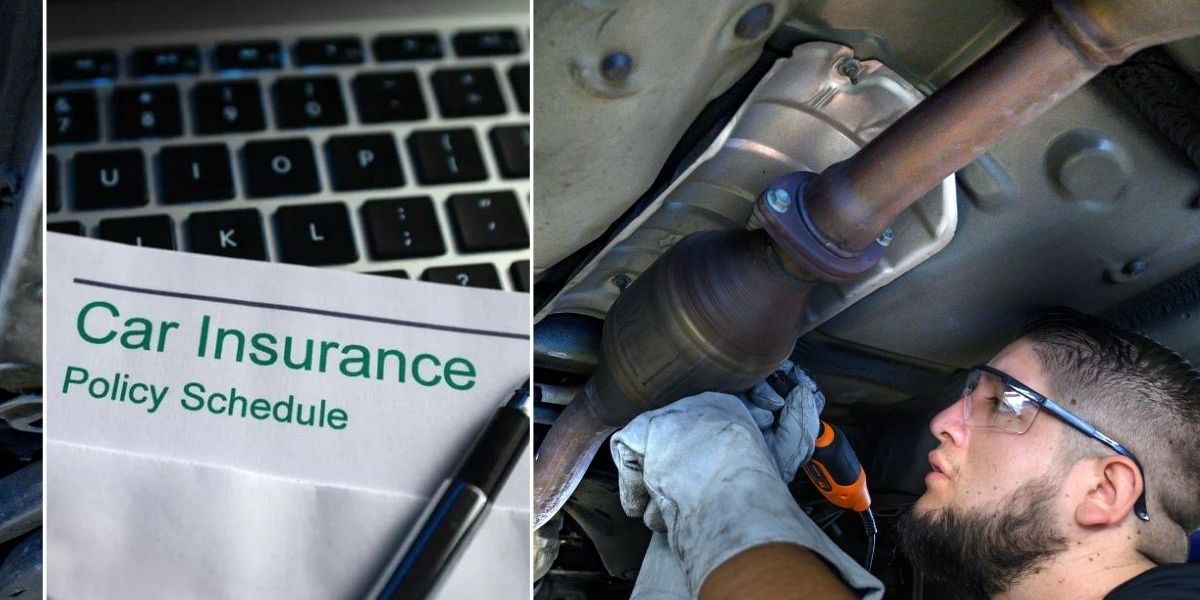Scientists have identified a new threat to air travel — space junk.
A new study found that an average of two discarded rockets re-enter Earth’s atmosphere each week – meaning that around 100 large pieces of space debris fall from the sky each year.
They warn that discarded rockets and degraded satellites in orbit have a one-in-four chance of falling back to Earth through busy commercial airspace each year.
Researchers from the University of British Columbia found airspaces in the northern US, Europe and around major cities in the Asia-Pacific are most at risk of uncontrolled re-entries.
This could lead to airport closures, flight delays and cancellations and a roughly one in 430,000 chance of space junk colliding with a plane mid-air in those regions.
The warnings come amid a rash of deadly airplane disasters throughout the US this year.
Since January 29, there have been three catastrophic incidents involving airplanes, including the mid-air collision over the Potomac River which killed 67 people.
During that fatal accident, a US Army Black Hawk helicopter was on a training mission in Washington DC when it collided with an American Airlines flight – sparking new concerns that there is simply too much going on near busy commercial airports.
Researchers warned there is a 26 percent chance of space debris falling back to Earth through a busy commercial airspace. Pictured are rescue teams pulling part of an American Airlines plane out of the Potomac River. It collided with a Black Hawk helicopter
That same week, seven people died when a medical plane crashed into a Philadelphia neighborhood shortly after takeoff.
Another 10 people lost their lives in Alaska after their small plane vanished from radar and was later found destroyed near the city of Nome.
A plane crashed in Arizona Monday, colliding into another craft. The incident killed on person and critically injured two.
Study first author Ewan Wright says the emerging space industry poses a growing threat to travelers as well.
‘The recent explosion of a SpaceX Starship shortly after launch demonstrated the challenges of having to suddenly close airspace,’ says Wright, an interdisciplinary studies doctoral student at the University of British Columbia.
‘This was a situation where we had good information about where the rocket debris was likely to come down, which is not the case for uncontrolled debris re-entering the atmosphere from orbit.’
Space X’s seventh Starship test flight disintegrated less than 10 minutes after its launch on February 16.
The unmanned test flight was Elon Musk’s latest attempt to pave the way for reaching Mars.
Starship launched from Texas and successfully flew for around eight minutes, with the teams’ second breathtaking booster catch, before contact was lost.
According to NPR, flights across the Caribbean were quickly diverted to avoid the explosion and resulting debris field.
Flight-tracking websites FlightAware and Flightradar24 revealed that over 20 flights appeared to have been delayed or diverted due to the SpaceX explosion.

The new-generation SpaceX ship launched from Texas in mid-January and successfully flew for around eight minutes, with the teams’ second breathtaking booster catch, before contact was lost

Since January 29, there have been three catastrophic incidents involving airplanes, including the mid-air collision over the Potomac River which killed 67 people. A Black Hawk helicopter and an American Airlines flight smashed into each other
The study, published in Scientific Reports, also notes that a giant piece of space debris fell straight through European airspace in 2022.
The 22 ton rocket engine forced Spanish and French officials to close down their airspace until the threat had passed.
It turned out that Denver, Colorado had the busiest airspace in this study, with one plane in the air for every seven square miles.
Overall, the study estimates that there are around 2,300 discarded rockets currently in low orbit – all which are destined to fall back to Earth.
Looking at the regions that have 10 percent of the peak air traffic worldwide, scientists discovered a 26 percent risk of this space junk entering these busy flight routes annually.
However, Wright notes that even quieter commercial airspace is at risk from above.
‘Notably, the airspace over southern Europe that was closed in 2022 is only five percent of the peak. Around the world, there is a 75 percent chance of a re-entry in such regions each year,’ he said.

That same week, seven people died when a medical plane crashed into a Philadelphia neighborhood shortly after takeoff. A view of the wreckage from a small plane after it crashed in a residential area in Philadelphia
The recent events in Washington DC, Philadelphia, and Alaska have many flyers on edge and dreaming up nightmare scenarios like this one.
The disaster over Washington DC’s Potomac River was the first fatal crash involving a US commercial airline since 2009.
The collision took place as the American Airlines flight carrying 64 people made its final approach to Ronald Reagan Washington National Airport shortly before 9pm ET on Jan. 29.
The Black Hawk helicopter apparently flew into the jet’s path as it landed at the airport.
Just two days later, an air ambulance carrying six people, including a young girl, crashed in a residential area of Philadelphia causing chaotic scenes on the ground.
The Learjet 55 aircraft departed the Northeast Philadelphia Airport on Jan. 31 and was traveling to Springfield-Branson National Airport in Missouri before it lost control shortly after takeoff.
Doorbell footage caught the jet hurtling to the ground before exploding in a large fireball after less than a minute in the air.
A week later, rescuers found the remains of a plane carrying 10 people which vanished off the coast of Alaska on February. 6.
All 10 people aboard the tiny Bering Air Caravan are thought to be deceased.
Authorities initially confirmed they had discovered the bodies of three people in the wreckage of the plane located 34 miles southeast from the flight’s intended destination of Nome.
However, hours later, the Coastguard issued the tragic update that no survivors had been found.
‘The remaining 7 people are believed to be inside the aircraft but are currently inaccessible due to the condition of the plane,’ the agency wrote on X.
‘Our heartfelt condolences are with those affected by this tragic incident.’











